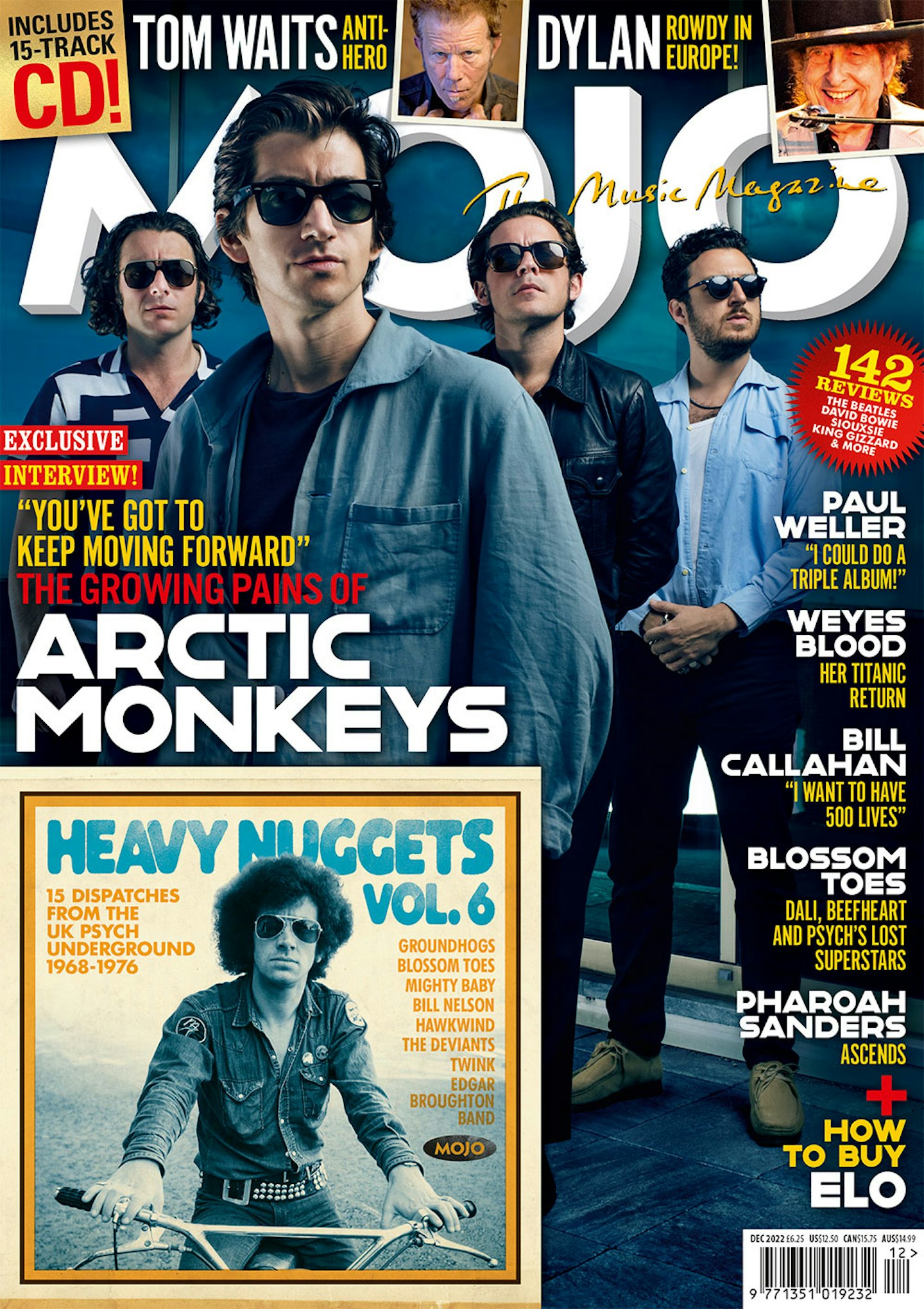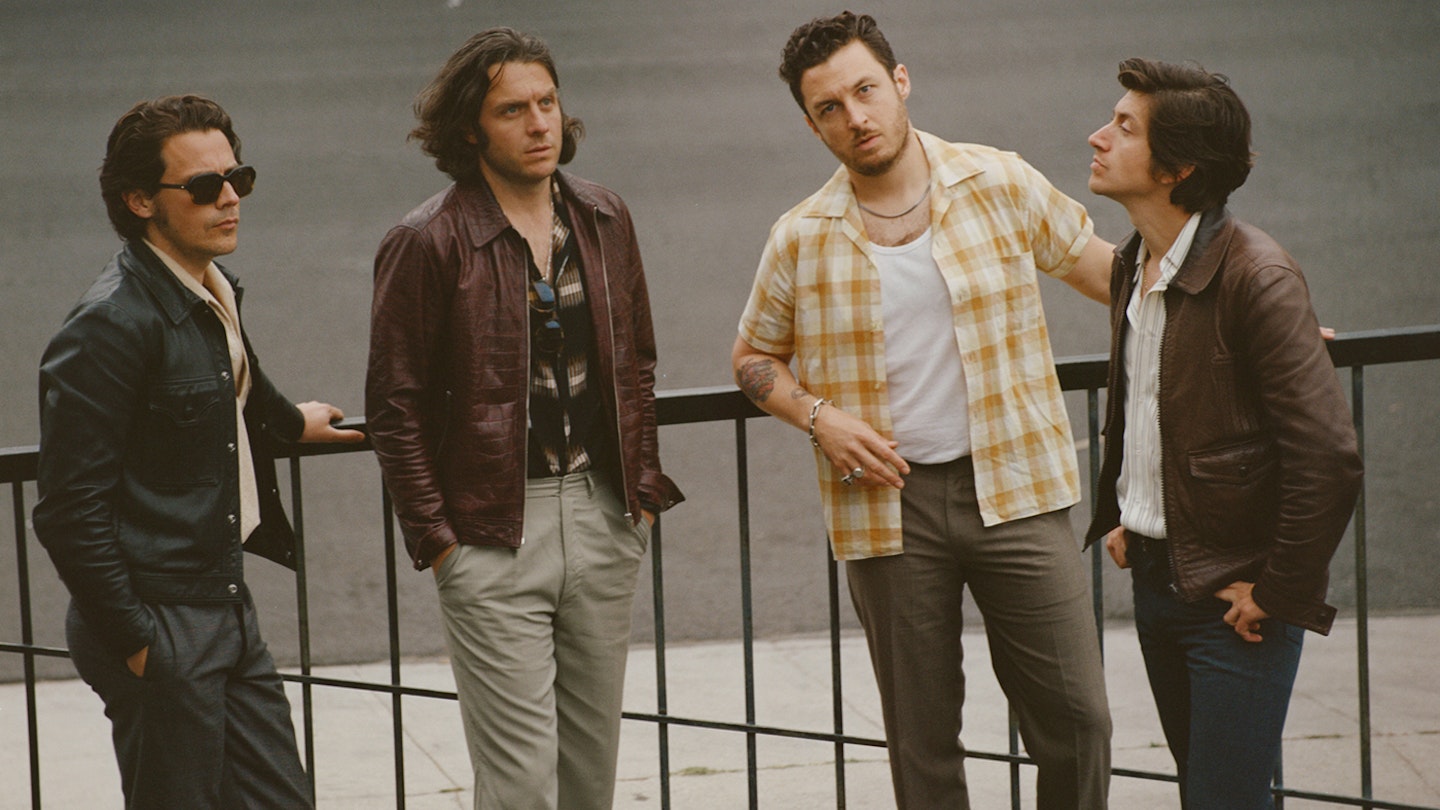Picture: Zakery Michael
In this extract from MOJO’s recent Arctic Monkey’s cover feature, Alex Turner recalls the eureka moment that started the ignition on the latest Arctic Monkeys album, The Car...
THE TRANQUILITY BASE SPACE ODYSSEY ended in South America in April 2019. Still energised by the momentum of touring, there were thoughts of a quick return to the studio. Record a couple of songs, put them out, keep going. The precedent was R UMine?: recorded as a standalone single in January 2012 and released a month later amidst the ongoing promotion cycle of the previous year’s Suck It And See; by March it had made its live debut, and that summer it became the bedrock upon which the next album, AM, was built. Seeing as AM’s beat-heavy Californi-cation of the band’s road-hardened riff manual catapulted Arctic Monkeys to a second-phase commercial peak – Number 1 in the US and UK – it didn’t seem a bad idea to follow the same path.
“The feeling I had at the end of that tour in 2019 was this idea of, ‘Let’s write a song that could close the show,’” remembers Turner. “Whatever that means. As soon as I got off the tour, I suppose the idea of what closing a show is becomes a bit more abstract.”
By the end of the year, they were back in harness with James Ford at La Frette, the Parisian studio that provided part of Tranquility’s louche glow. Even at this early stage of the process, Turner sensed this would not be a return to AM, but nor did these latest La Frette record-ings evince a viable new direction. Just one song, Hello You, would make it onto the new album, albeit subsequently rearranged and re-recorded. “The rest,” Turner says, “is on the cutting room floor. However, I do feel as though it was part of the story, in that I feel everything sort of influences everything else to an extent.”
"No matter how far you get, there’s always that thing that will stitch us all back together..." Richard Hawley on why Sheffield still loves Arctic Monkeys.
Into 2020, Turner found himself back on ‘Lunar Surface’, the 8-track studio in the spare room of his house in Los Angeles where he’d composed the songs for Tranquility Base on a Steinway Vertegrand piano. This time, however, his hands were on an electric guitar.
“I remember trying to write riffs and stuff, make it louder,” he says. “But it just wasn’t… It didn’t want to go there. I think I might have even put me motorbike boots on one day to try and write a riff, but even that didn’t work. Even that didn’t summon the riff. Or sometimes I went down that road but it sounded like a spoof or something.”
Putting his guitar down and taking his motor-bike boots off, Turner went back to his machines. And then it happened: he had a melancholy tune, and words to match – “Don’t get emotional…”
“It came at that moment,” he says. “This was the Mirrorball song – the point on this record where it’s like, that’s the thing. I had that intro, and I made a demo and the sort of synthesizer loop that runs through it… ‘OK. It seems that there’s something in this direction.’ And then I spent the next two years trying to figure out what would fit around that, I suppose, occasionally still putting the biker boots back on. It’s not all like Mirrorball, but that was definitely the start of the record and every-thing had to be able to hang out with that tune, from that point.”
That summer, as he cogitated and experimented, tinkered and tweaked, Turner was reading In The Blink Of An Eye, a book by Walter Murch, the triple-Academy Award-winning editor of films including The English Patient, The Godfather and Apocalypse Now. With specific reference to the latter, Murch discusses the “shadow cut”: where a cut is made, and the film spliced together, then upon reflection subsequently undone. Turner saw parallels as he became immersed in his band’s latest project.
"The Car is a complicated and incrementally rewarding album; the Arctic Monkeys’ best, possibly, and certainly one that reveals its hooks and snares with the measure and composure that the band now bring to all their craft..." Read MOJO's verdict on Arctic Monkey's The Car.
“I think the idea of the shadow splice is not out of place necessarily in the process of making records. There’s another song that nearly made it, that was supposed to close the record, in fact. We closed with something else in the end, but it was there for so long in my mind, that you take it away, and there’s still… it leaves something behind.”
As was clear even from the earliest Arctic Monkeys material, with its erudite reportage of South Yorkshire street hassle, Turner views songwriting through a cineaste’s eye. He often Jason Joyce, Chris Saunders, Alamy uses “scene” for “lyric”, and our interview digresses for a minute or two into his recent obsessive search for a physical copy of an interview where David Axelrod suggested that the term ‘producer’ in a musical context should more correctly be ‘director’.
“Ordering a fucking magazine because of a David Axelrod interview! Is that too MOJO?!” Turner wonders, before winding back to his new album’s shadow song. “There was a million different versions, and it’s not unlikely that it will find its way out there, I think, at some point, but it just didn’t make the cut.” He laughs. “I guess we don’t need to spend too much time talking about the song that isn’t on the record. That would be perverse – although it is pretty MOJO though. Why don’t we just do that?! Might be more informative in a way.”
“Would Alex do a solo record? And what would that be like?” Read MOJO’s Arctic Monkeys interview in full!

